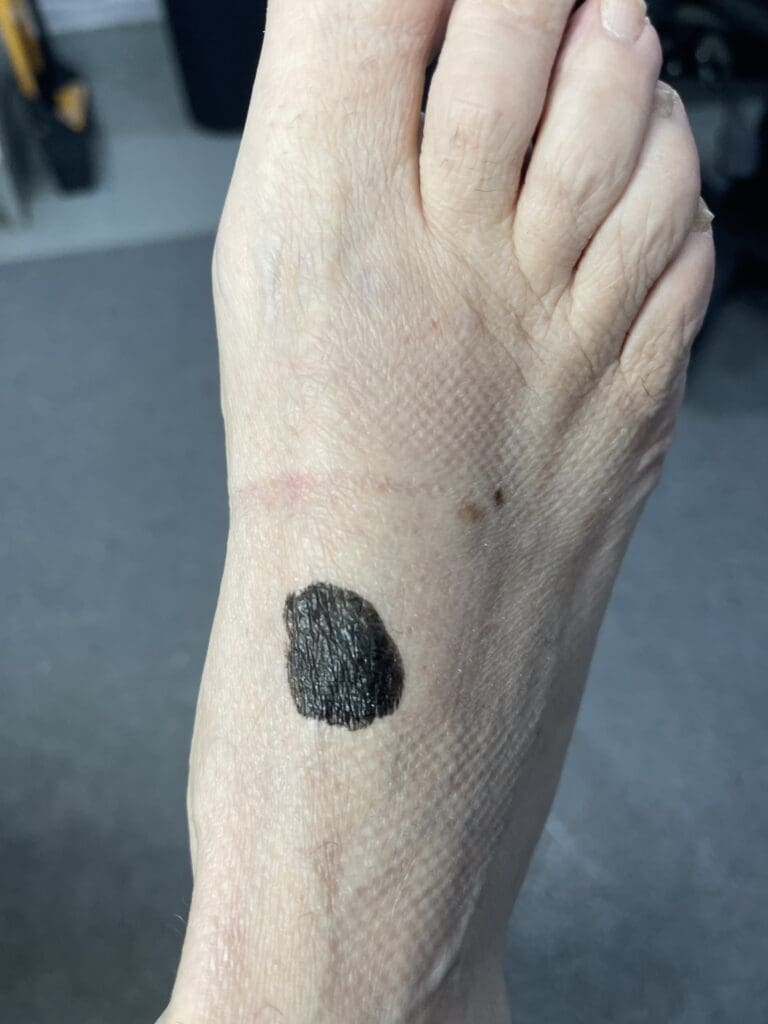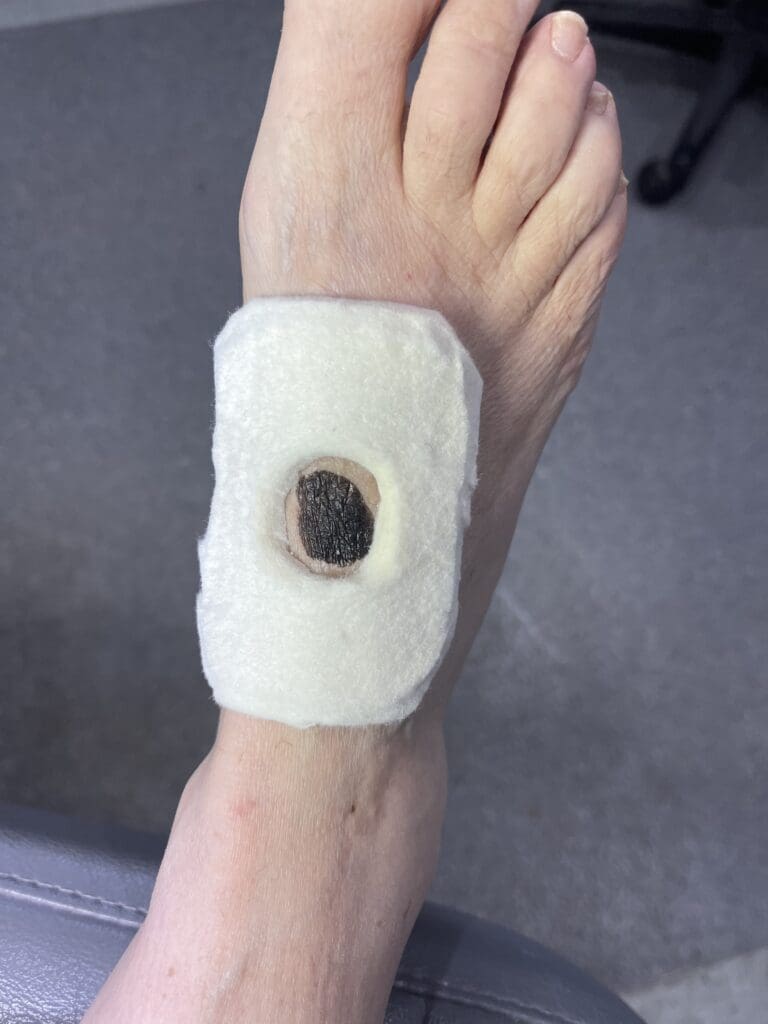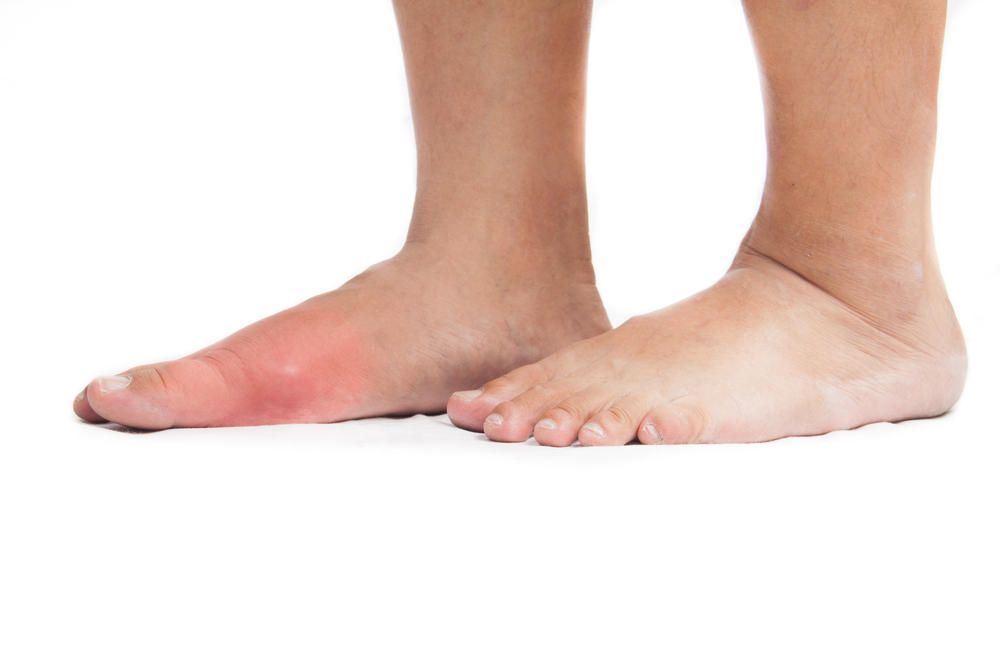The condition of a ‘Saddle Bone Deformity‘ is the name used by lay people for what is technically called a dorsal metatarsal cuneiform exostosis. This is an enlargement of bone and joint area on the top of the foot at the base of the first metatarsal bone and the medial cuneiform bone creating a ‘humping’ of the dorsum of the foot. This dorsal midfoot area of the foot is occasionally is called the ‘saddle’ of the foot, hence the name ‘Saddle Bone deformity’.
Causes of a Saddle Bone Deformity
Most people have some amount of the ‘humping’ over the midfoot and some just have more than others. It is much more common in those with a higher arched foot (pes cavus). It may also be caused by a lot of dorsal jamming due to a lot of movement and mobility of the first metatarsal bone.
If the area is irritated by footwear, a swelling of a bursa (bursitis) can develop. This can become red and inflamed. There may also be a pinched nerve and tendonitis from the shoe pressure. The pinched nerve can send shooting pains forward into the foot and also result in some pins and needles or numbness.
Treatment of a Saddle Bone Deformity
As this problem is related to pressure, the best thing to do is get pressure off the area. The best and easiest way to do that is don’t wear shoes, go barefoot. The other best way is to offload the area is with the use of padding (see below).
If the pain is really bad, ice packs, a cortisone shot and anti-inflammatory drugs can be used. However, they are not going to be much use in the medium term unless something is done to off load the pressure on the area.
Adhesive Felt Padding for a Saddle Bone Deformity
Adhesive podiatry felt is a good way to deal with a painful saddle bone deformity and bursitis in the short to medium term.



To do this:
- Start by marking the painful area with a felt pen or lipstick. The reason for this is to transfer that mark to the tongue of the shoe so you know where to the place the pad. After marking the foot, but the shoe on and do what you can to get the painful area marked under the tongue of the shoe.
- Short term: If the problem is quite painful, then the better short term option is to put the felt pad on the foot. Start with the sheet of podiatry felt and use scissors to cut the pad big enough to surround the area and then use a small sharp pair of scissors to cut a hole in the middle of the pad. Stick the pad on the foot and then use tape to hold the pad in place.
- Medium term: As mentioned in (1) above, make sure you have marked the location of the pain under the tongue of the shoe. Cut a felt pad like in (2), but stick it under the tongue of the shoe. Make sure that the pad is big or wide enough, the hole is in the right place and the pad is placed to get pressure off the painful area. Make sure that the felt is thick enough (I use 10mm thick felt, which can be a bit tough to cut with small or blunt scissors).
- Long term: If (3) works well, then in the long term a more permanent material (eg Poron or EVA) can be used as the felt does tend to compress over the long term and not be effective any more. This will need to be shaped properly and glued in place.
Surgery for a Saddle Bone Deformity
Surgery is always an option if the above techniques of using padding are not helping. This could involve a resection of the enlarged bone or a fusion of the midfoot joints.
Forum Discussions on the Saddle Bone Deformity:
Saddle Bone Deformity?
Saddle bone deformity question
Personal Opinion on the Saddle Bone Deformity
The term ‘saddle bone’ is hardly ever used in professional and clinical communities, and I was surprised when I first learnt of the term recently. How could I have gone so long and not come across it. When I first learnt of the term I did not think much of it until I realized just how often it is searched for in Google, which can be up to 1000 times in some months! This means that the public are using the term and are searching for ‘Saddle bone deformity’. The term ‘dorsal metatarsal cuneiform exostosis’ is only searched for 10 times a month!
The biggest problem I see with the use of podiatry felt to off load and fix a saddle bone deformity and other painful problems like this is that the felt pad is not thick enough. I almost always use the 10mm felt. It does flatten a bit with use and if it is too thick, then you can peel of a small amount to make it thinner.
Author:
University lecturer, runner, cynic, researcher, skeptic, forum admin, woo basher, clinician, rabble-rouser, blogger, dad.



